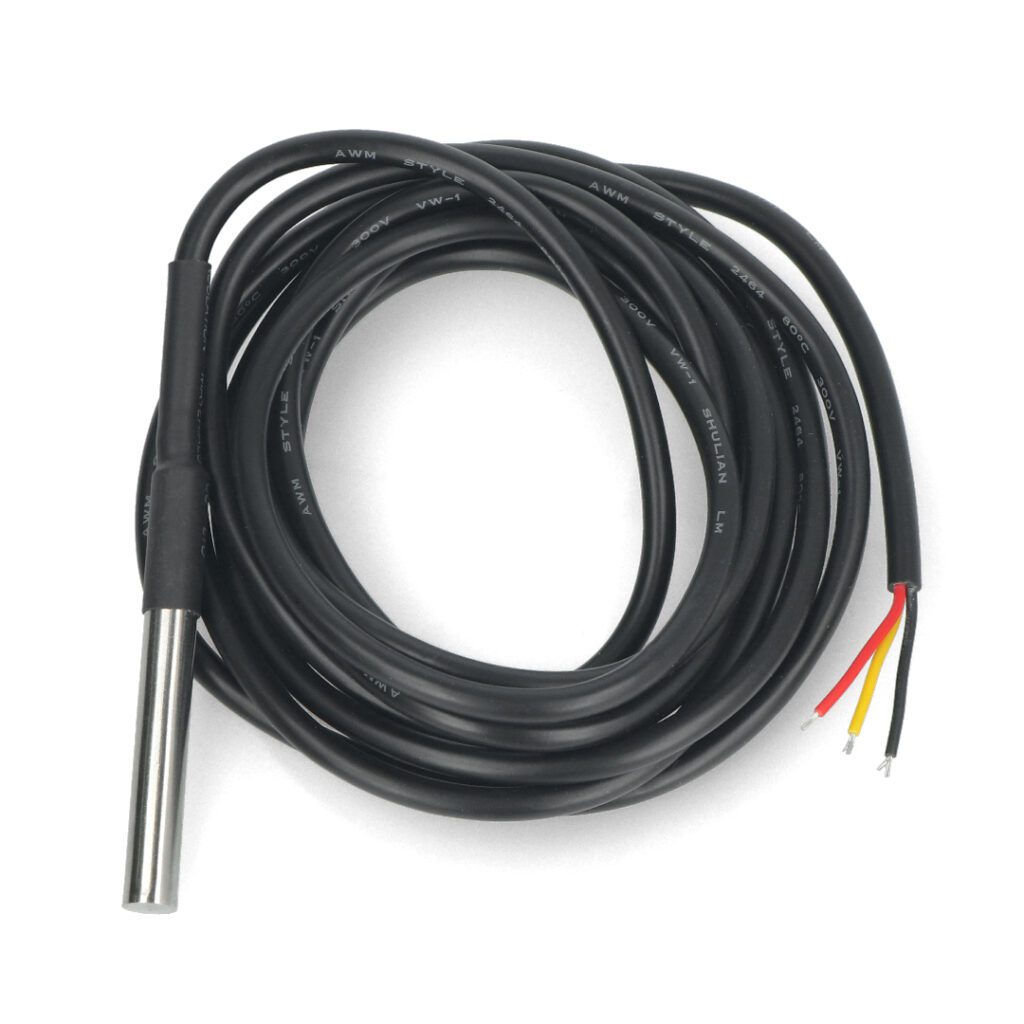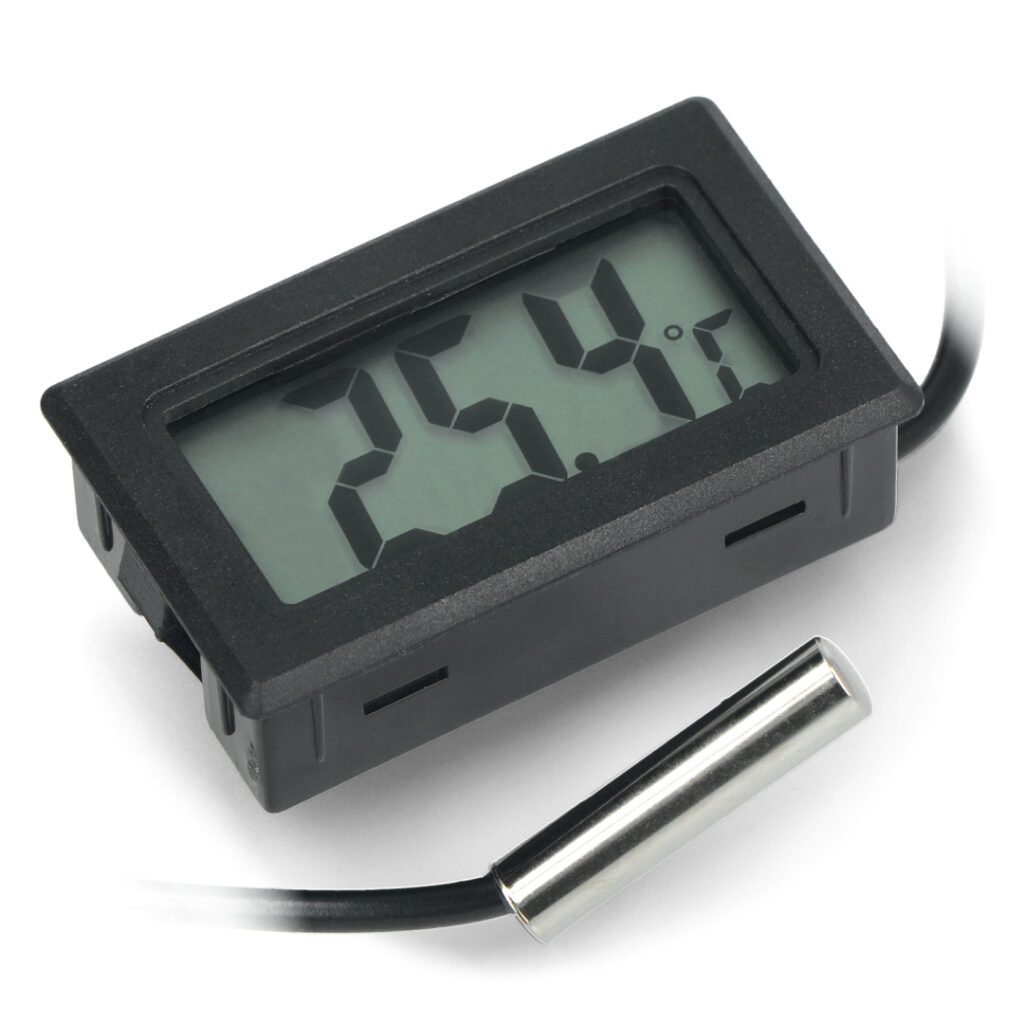Table of Contents:
Temperature measurement serves us in homes, work, many fields of industry and science.
Modern medicine could not exist without it either.
That’s why it’s hard to imagine a world without a tool like a temperature probe, and not just in places where a person is unlikely to go.
Temperature measurements
A temperature probe is a type of temperature sensor.
We already mentioned in the introduction that they are used for various applications in many industries.
Some temperature probes can measure temperature by placing them on a surface.
Others must be inserted or immersed in a liquid to measure temperature.
Often, temperature probes measure a change in voltage and convert it to a format that can be monitored by the user – thus providing measurement results.
Temperature probes can have standard configurations or be made with specific designs in mind, as is the case with advanced industrial, scientific and medical applications.
These custom temperature probes are often used for very specific applications, such as in sports or the ever-growing number of branches of human engineering.
If one were to try to collect the most common areas of their application, industrial equipment, transit, inspection, computers, home appliances, HVAC (cooling and heating systems, such as air conditioners), power and utilities, calibration, scientific laboratories and patient monitoring – the latter example is quite close to us, as we’ve all had a home thermometer on hand to diagnose fever or frigidity. Temperature probes, however, can be far more complex.
Temperature probes - types
Temperature probes are available in different formats, and each type has its own advantages and disadvantages.
- NTC (Negative Temperature Coefficient) temperature probes use thermistors.
They tend to be less expensive than those mentioned later in the article and have a smaller temperature range, but offer fast response and are very sensitive. - An RTD is a resistive temperature sensor.
These temperature probes offer high reliability and long life.
This makes them slightly more expensive, but they also offer a wide temperature range. - Thermocouples, or thermocouple temperature probes, are less expensive than RTDs and also offer a wide temperature range, but they are not as stable over time and some of their variants require more frequent replacement.
Temperature probe and thermistor - how does it work?
In this fairly common variant, our temperature sensor is a thermistor (a temperature-variable resistor) that is placed inside the probe and responds to temperature changes by changing its electrical resistance or voltage.
This is possible because the semiconductor material from which the thermistor is made exhibits a so-called “temperature effect.
temperature effect, which means that its resistance changes with a change in temperature.
The aforementioned NTC thermistors are particularly popular because of their simplicity and effectiveness in many measurement applications – in their case, the resistance decreases as the temperature increases.
This means that they are more conductive at higher temperatures and are therefore commonly used as temperature sensors because their resistance change is simpler to measure and interpret.
The probe itself is usually housed in a metal or plastic case, which provides protection from the elements and allows installation in a variety of environments.
You also need a cable – a wire connects the probe to the measuring device, which transmits the signal from the temperature sensor to the reading.
Let’s look at how it works in practice and what happens inside.
The temperature probe collects information about the temperature of the environment or the specific component to which it is attached.
The electrical signal generated by the temperature sensor is processed by a measuring device, for example, digital, analog, or a mechanism that interprets data of both types.
The temperature readout can be displayed and stored in the device’s memory for later analysis.
Waterproof temperature probe for home and workshop
Temperature probes allow you to monitor the temperature in different parts of the house.
This makes it easier to maintain comfortable thermal conditions.
Temperature probes can also help detect heating, air conditioning or ventilation problems early.
A simple example is when the temperature in a particular room is much lower or higher than expected, and this could indicate a fault in the HVAC system that needs to be fixed as soon as possible.
Being aware of the temperature in different parts of your home allows you to manage your energy use more efficiently, even if you have already installed some sort of building automation system.
You can adjust thermostat settings or HVAC schedules based on actual conditions, from there it’s easy to potentially lower energy bills.
In some situations, temperatures can lead to a veritable disaster – for example, during periods of frost.
Owners of houses and buildings that stand empty for a good part of the year, and in the meantime someone forgot to cut off the supply, are painfully convinced of this – frosts cause not only cracks in pipes, but also damage to valves, fittings and other components of the water system.
Repairing such damage is usually expensive and time-consuming.
Electronic projects, or temperature probes with Arduino and Raspberry Pi
Of course, it doesn’t stop there. Temperature probes available from Botland can be an ideal addition to projects based on Arduino and Raspberry Pi platforms.
By integrating temperature probes with these platforms, you can create intelligent monitoring systems, air conditioning management, heating control or even systems that warn of potential hazards.
In Botland’s product descriptions, you will find not only a clear description of the leads and complete technical specifications for probes and sensors, but also libraries and ready-made connection examples.
Programming skills and a developer’s vein will certainly allow further integrations in the Internet of Things (IoT) area.
How useful was this post?
Click on a star to rate it!
Average rating 0 / 5. Vote count: 0
No votes so far! Be the first to rate this post.





















